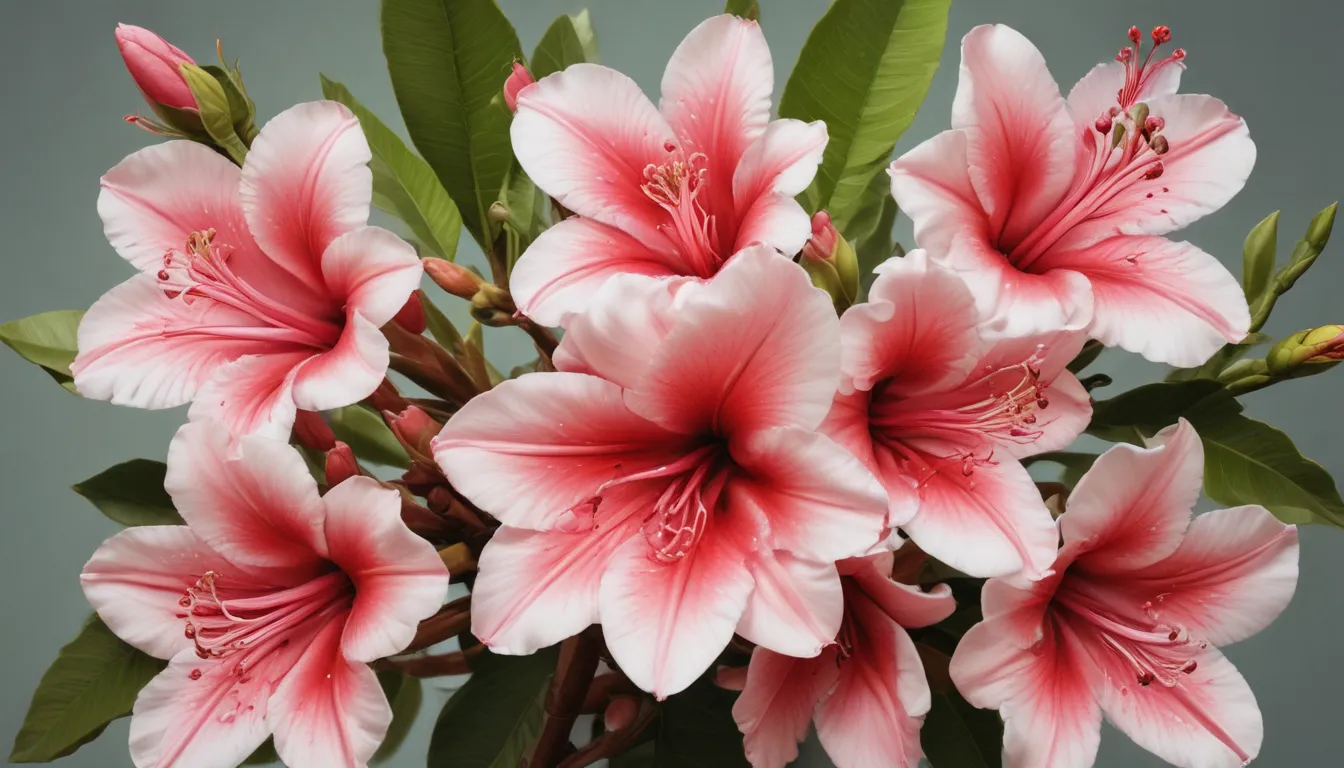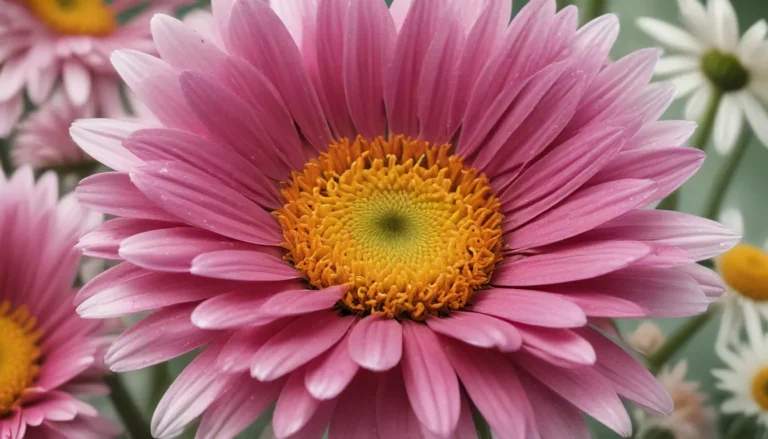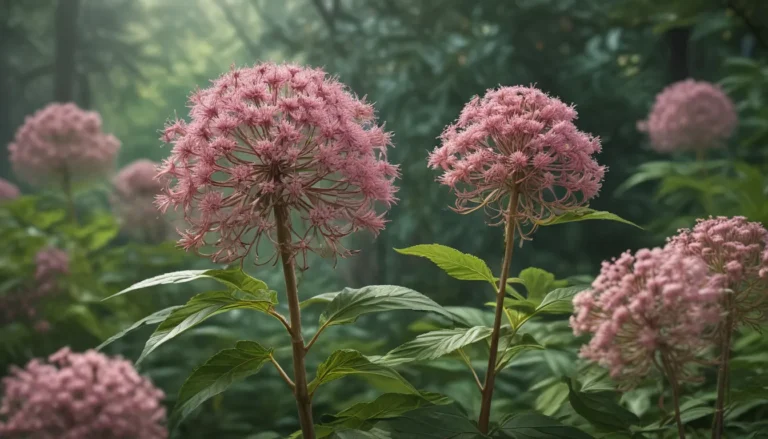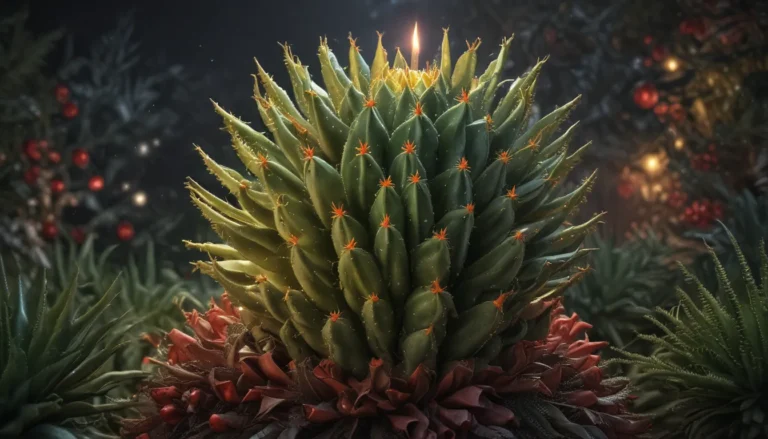The pictures we use in our articles might not show exactly what the words say. We choose these pictures to make you interested in reading more. The pictures work together with the words but don’t take their place. The words still tell you the important facts.
Have you ever heard of the Impala Lily, also known as Adenium obesum? This captivating flowering plant hails from the arid landscapes of Africa and the Arabian Peninsula, showcasing a unique blend of resilience and beauty. With its striking trumpet-shaped flowers and ability to survive in harsh conditions, the Impala Lily has captured the hearts of botanists and plant enthusiasts worldwide. Join us on a journey to uncover 12 intriguing facts about this extraordinary plant, from its cultural significance to its medicinal uses and more.
Unveiling the Impala Lily’s Resilience
The Impala Lily stands out as a symbol of resilience, thriving in arid regions where water is scarce. Its ability to adapt to harsh conditions serves as a testament to nature's remarkable strength and beauty.
A Closer Look at the Impala Lily’s Unique Appearance
One cannot help but be mesmerized by the Impala Lily's stunning trumpet-shaped flowers, which come in various hues of pink, red, and white. Its thick succulent stems and swollen trunk give it a bonsai-like appearance that adds to its charm.
Survival Tactics: Thriving in Arid Environments
Adapting to its arid surroundings, the Impala Lily has developed specialized features that allow it to store water in its thick stems and fleshy leaves. This unique adaptation enables it to withstand prolonged periods of drought with ease.
Sweet Scents and Pollinator Magnetism
With its sweet and captivating fragrance, the Impala Lily acts as a beacon for pollinators such as bees and butterflies. This mutualistic relationship aids in the plant's reproduction and ensures its continued survival in the ecosystem.
Healing Powers: The Impala Lily in Traditional African Medicine
In traditional African medicine, various parts of the Impala Lily are utilized to treat a range of ailments, from skin conditions to respiratory issues. Its extracts are believed to possess antibacterial and anti-inflammatory properties, showcasing its medicinal value.
The Impala Lily as a Bonsai Beauty
Due to its unique appearance and sculptural qualities, the Impala Lily has become a popular choice among bonsai enthusiasts. Its striking flowers and interesting growth patterns make it a delightful addition to any bonsai collection.
Growing Tips: Indoors and Outdoors
Whether you choose to grow your Impala Lily indoors or outdoors, ensure it receives plenty of sunlight and is planted in well-draining soil. With the right care, you can witness its vibrant blooms brightening up your space.
Pruning for Aesthetic Appeal
To enhance the Impala Lily's visual appeal, regular pruning is recommended. By carefully shaping the plant through pruning, you can create captivating forms reminiscent of bonsai art, adding a touch of artistry to your garden.
Embracing Slow Growth and Longevity
The Impala Lily is a long-lived plant, with some specimens enduring for several decades. Its slow growth rate adds to its allure, appealing to those who appreciate the beauty of patience and perseverance in nature.
Cultivated Varieties: Adding Intrigue to the Impala Lily
Through horticultural advances, cultivated varieties of the Impala Lily have been developed, boasting unique characteristics such as double-flowered forms and diverse color variations. These variations only add to the plant's already intriguing nature.
Love and Affection: The Impala Lily’s Symbolic Meaning
In several cultures, the Impala Lily is seen as a symbol of love and affection, often given as a gift to express deep emotions and sentiments towards loved ones. Its vibrant blooms serve as a testament to the power of love and connection.
Delving into African Folklore and Cultural Significance
In African folklore, the Impala Lily holds a special place, steeped in mythical tales and beliefs. It is often revered as a plant of spiritual power and protective energy, further enriching its cultural significance.
In conclusion, the Impala Lily stands as a testament to nature's resilience and beauty, captivating plant enthusiasts with its unique characteristics and cultural associations. Whether admired for its striking flowers, utilized in traditional medicine, or appreciated as a symbol of love, this remarkable plant continues to inspire wonder and admiration across the globe.
FAQs: Your Impala Lily Care Guide
- How do I care for an Impala Lily?
-
The Impala Lily thrives in well-drained soil, ample sunlight, and moderate watering. Avoid overwatering to prevent root rot and prune regularly for optimal growth.
-
Can Impala Lilies be grown indoors?
-
Yes, Impala Lilies can be grown indoors, but ensure they receive adequate sunlight near a south-facing window or artificial grow lights.
-
Are Impala Lilies toxic to pets?
-
Yes, the sap of the Impala Lily contains toxic compounds, so keep pets away to prevent ingestion or skin irritation.
-
How long does it take for an Impala Lily to bloom?
-
An Impala Lily typically takes two to three years to mature and start blooming, with peak flowering during warmer months.
-
Can I propagate Impala Lilies from cuttings?
- Yes, you can propagate Impala Lilies from stem cuttings by planting them in well-draining soil and keeping them in a warm, bright location.
Delve into the world of the Impala Lily and let its unique characteristics and rich history inspire you to explore the wonders of nature. From its resilience in arid environments to its cultural significance and medicinal uses, this captivating plant is a true marvel worth celebrating.






